Pig farming is the process of raising domesticated pigs. The pig business in Zimbabwe can be very profitable if it is properly operated under acceptable practices and conditions suitable for pig production, good management, and a good business plan. In addition, pig farming is an environmentally friendly way to produce food.
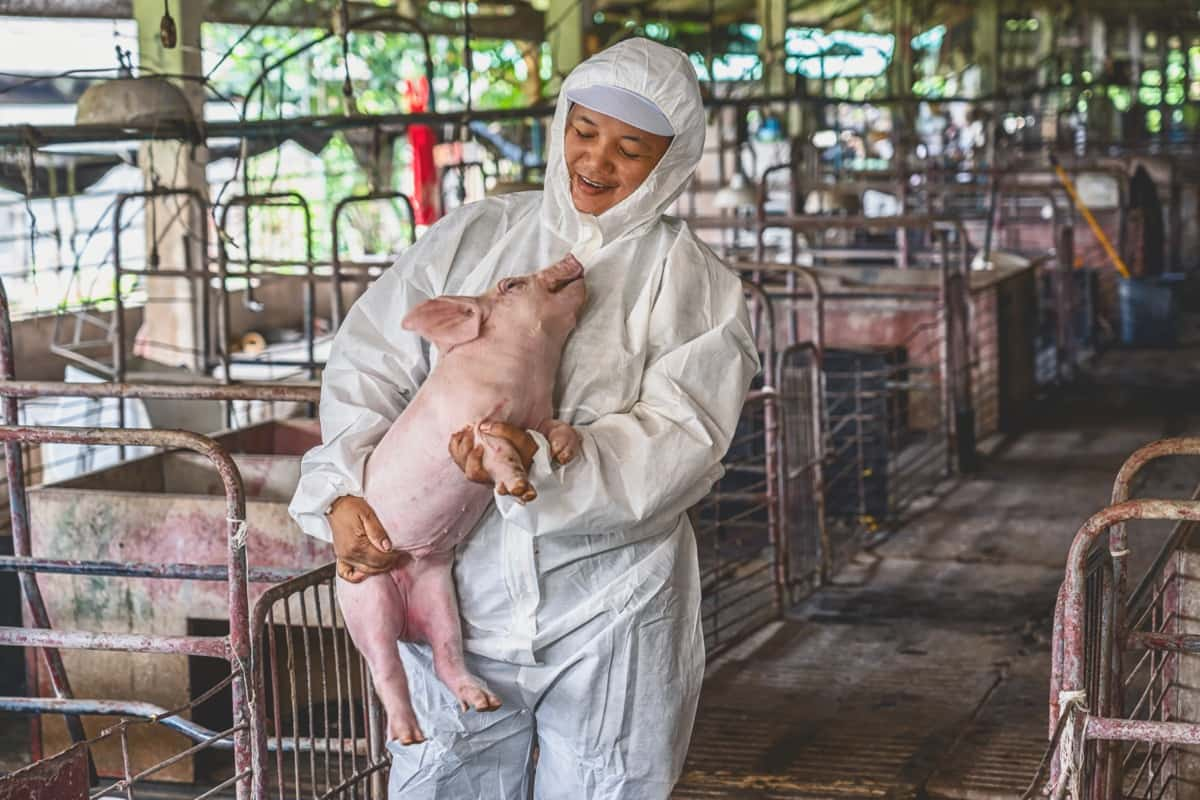
Importance of Pig farming in Zimbabwe
- Today, Zimbabwe is one of the world’s leading producers of pork products. However, the country has a total land area of just over 100,000 square kilometers, so it is impossible to grow enough crops to feed all of the country’s citizens. As a result, most people in Zimbabwe rely on pork as their primary source of protein.
- There is a need for more food, and pigs are one of the most common livestock types in Zimbabwe.
- Pigs are easy to transport and manage so that they can be used for commercial purposes.
- Zimbabwe has fertile soil that is conducive to pig farming.
Best housing for pigs in Zimbabwe
- Good, efficient housing makes management easier and helps the farmer get 85% or more live-born pigs to market weight quickly.
- Pigs at different stages of development require different environments (temperatures), thus different housing. However, if they are to produce and grow to their maximum potential, pigs need special protection against extremely low temperatures.
- Reproducing pigs should be protected from high temperatures. Houses should be designed to protect pigs from extreme temperatures and other adverse weather conditions, such as cold winds and continuous rain.
In case you missed it: How to Start Pig Farming from Scratch: A Complete Guide for Beginners
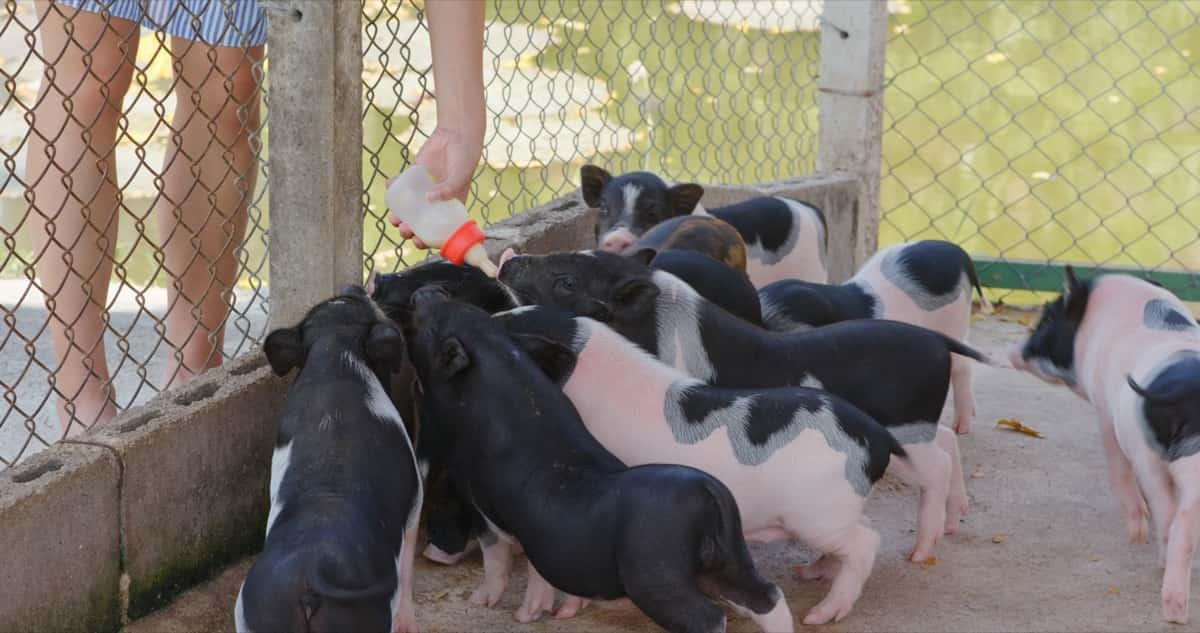
Select an appropriate land for Pig farming
- After you have gained enough knowledge about raising pigs, the next step is to choose a suitable land for it.
- Plenty of fresh and clean fresh water.
- Proximity to markets for selling essential medicines, vaccines, commodities, and agricultural products.
- Preferably rural land due to the easy and cheap availability of labor.
- A superior market transportation system.
- The provision of veterinary service.
Requirements for Pig farming in Zimbabwe
- Pig farming requires much attention and care to succeed in this business. To start, you’ll need access to land (ideally at least 20 hectares), financing (to cover initial investment costs), and some basic equipment (such as pens, feeders, and waterers).
- Before starting pig farming in Zimbabwe, it is essential to understand the breeds of pigs best suited for the climate and soil of the country.
- You will want to get a business license from the government. You will also need to obtain appropriate land and equipment.
- Once you have obtained the necessary permits and licenses, you must set up your farm according to government guidelines.
In case you missed it: How to Make Corn Silage: Production and Management Steps for Goats, Sheep, Cows, Pigs, and Cattle
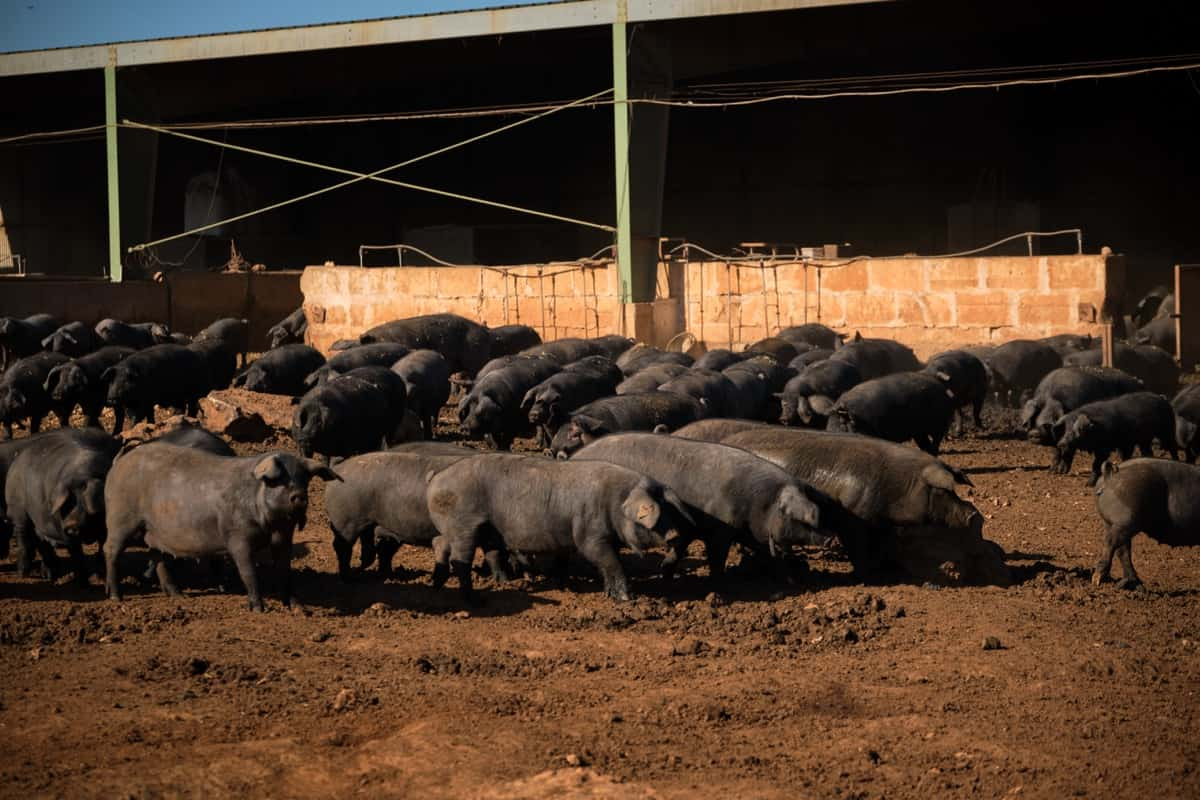
Small-scale Pig farming in Zimbabwe
Pigs can be raised in several ways, but the most common way is by raising them in pens. Pens can be set up on a large scale or small scale, and they typically have an area where the pigs feed and sleep, an area where they get their water, and an area where they defecate. Pigs will also need access to areas where they can exercise.
Pig breeds available in Zimbabwe
Various pig breeds can be raised in Zimbabwe, each with unique traits that suit specific farming conditions. Different pig breeds In Zimbabwe are Mukota, Large White, Landrace, Duroc, Hereford (also known as Hereford Hog), American Yorkshire, and Berkshire.
Key rules for starting Pig farming in Zimbabwe
- Identify the ideal location for your farm. In Zimbabwe, pig farming is most successful in areas with plenty of fertile soil and adequate water resources. Therefore, soil tests are necessary to determine the suitability of an area for pig farming.
- Prepare the land by clearing existing vegetation and turning the soil over using a rotary plow or a cultivator. Then, add organic matter such as manure, compost, or earthworms to increase soil fertility.
- Establish your fence line and get approval from your local government authorities before beginning construction. Fence lines should be at least 6 meters wide and composed of wire mesh or solid posts spaced at least 3 meters apart; pigs are agile animals and can easily escape confinement if their boundaries are not well defined.
- Purchase your pigs from an approved breeder who will give you specific instructions on caring for and managing your herd during their gestation period, weaning, and early growth stages. There is usually an initial set-up fee, and then monthly feed costs will follow after that, depending on the size of your herd.
In case you missed it: Feed Management of Sheep and Goats: Formulation, Ingredients, Organic, DIY Feed mix, and Feeding Practices
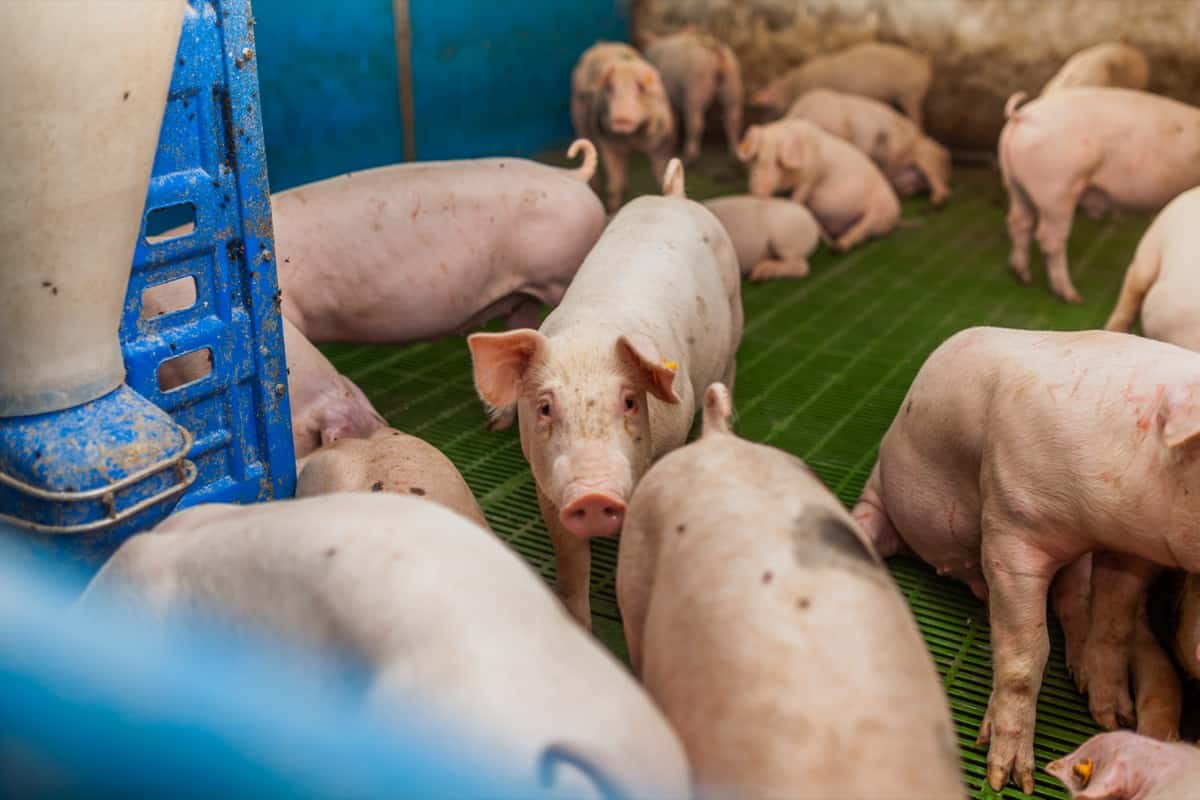
Pig farming states in Zimbabwe
- Masvingo – Masvingo is one of the most fertile provinces in Zimbabwe and makes excellent pig farms due to its ample water resources, fertile soil, and temperate climate.
- Matabeleland North – Matabeleland North is another province conducive to pig farming because of its naturally fertile soil and abundant water supplies.
- Manicaland – Manicaland has sandy soils perfect for raising pigs, making it one of the most popular provinces for pig farming in Zimbabwe.
- Mashonaland West – The most popular province for pig farming in Zimbabwe is Mashonaland West due to its ample land and access to irrigation systems.
Pig farm set-up cost in Zimbabwe
The set-up cost includes fencing materials, barns, and pens. The profit from pig farming depends on several factors, including pork product prices and inputs (fertilizer, feed). Pig farming is a profitable business in Zimbabwe. However, starting a pig farm business is not easy.
Before starting a pig farm business, you will need to research the cost of starting the farm, the breeds of pigs that are best for your region, the set-up costs involved in setting up the operation, and the profit margins. You will also need to create a business plan and market your farm correctly. Starting a pig farm in Zimbabwe would be between Z$100,000 and Z$240,000.
Care and management of Pig farm in Zimbabwe
- Firstly, you will need the land to farm pigs. You can purchase the land outright, lease it for a period of time, or obtain permission from the government to lease land from them.
- Once you have the land, you must ensure it is legally zoned for agriculture. You also will need approved building plans and permits from the government.
- You have enough space for pigs to live in. Many people think that pigs only eat hay and straw, but they eat anything they can get their jaws on.
- Pigs will also create tons of manure, so they have plenty of space to dispose of it. Finally, make sure that you are buying feed cheaply. This is especially important if you start as a pig farmer in Zimbabwe. A lot of the feed available in Zimbabwe is very expensive, and it can be difficult to find a feed that is both cheap and good quality.
- A pig farm in Zimbabwe is a valuable business opportunity due to the region’s high demand for pork products.
In case you missed it: Key Rules to Improve Feed Conversion Ratio (FCR) in Sheep: For Profitable Sheep Farming

What points to consider before starting Pig farming in Zimbabwe?
You’ll need to research the different breeds of pigs available and decide which suits your needs best. Then, create a business plan outlining your expected production and profit levels. Next, you’ll need to budget for equipment and other necessary costs for beginning pig farming in Zimbabwe. Research local regulations and taxes that may apply.
Necessary facilities for Pig farming in Zimbabwe
- Permanent housing for the pigs
- Feed and water tanks
- Fencing to protect the pigs from predators and other animals
- Vehicles to transport feed, water, and pigs to their farming areas
- Pig breeding stock
Pig farm problems in Zimbabwe
The main issue facing pig farmers in Zimbabwe is the lack of feed. Pig farms in Zimbabwe typically only produce enough feed for 60-70 percent of the pigs on the farm, which means that the rest of the pigs scavenge for food or eat weeds. This results in poor health and weight gain for the pigs, which reduces their productivity. Additionally, there is a chronic overpopulation problem on hog farms in Zimbabwe.
Due to a lack of space, each sow will often give birth to six or seven litters per year, resulting in a high death rate among new-borns and young pigs. This overpopulation problem also leads to increased costs due to fencing, feeding, and housing needs. To overcome these issues, Zimbabwe’s hog farmers must implement several strategies.
Firstly, they need to increase their output by increasing their feed intake or finding alternate feed sources for their pigs. Find ways to reduce mortality rates among new-borns and young pigs so that they do not compete for space and resources with older animals. Finally, establish long-term relationships with customers so they can guarantee a consistent supply of pork products year-round.
In case you missed it: 12 Key Rules for Effective Poultry Farm Management: From Planning to Reducing Production Cost
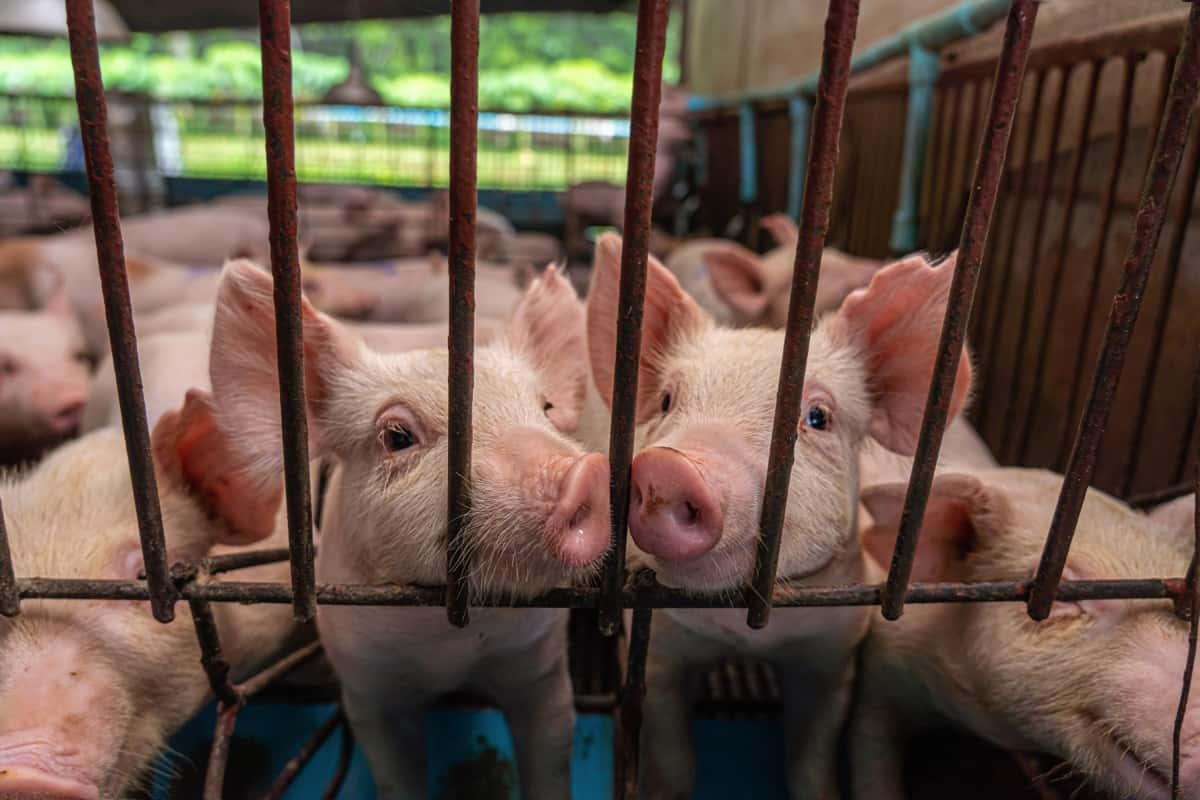
Feed the Pigs efficiently
The efficient feeding of pigs is an important aspect of commercial farming. The pig’s overall growth rate and health depend on the feed’s nutritional level. The main ingredients of pig feed include oats, wheat, rice, grains, sorghum, corn, and other millets.
Pig production challenges in Zimbabwe
The main challenges include inferior breeds, unavailability of funding, high feed and drug costs, persistent droughts, lack of management skills, insufficient extension services, and marketing policy bottlenecks. Another challenge is the shortage of electricity; most piglets die from cold and crushing by the sow as they seek warmth from the sow. Several factors have hindered the growth of Zimbabwe’s pork industry, including high feed costs, a shortage of feed resources, and competition from other meat producers in Africa.
In addition, there is a lack of skilled labor in the pork production sector, which has led to low productivity. Another challenge facing the Zimbabwean pork industry is its reliance on inputs such as maize and soybeans imported from abroad. To overcome these problems, the government must develop a comprehensive industrial strategy that addresses the country’s pork production constraints.
Create a Pig farming business plan in Zimbabwe
- Identify the location of your pig farm. You can either choose an existing farming land or acquire new land. Make sure the property is large enough to house your pigs and has enough space for agricultural activities such as feeding, watering, and breeding.
- Once you have identified the location of your farm, it is time to get started on acquiring the necessary equipment and resources. You will need at least four hectares of land for every hundred pigs you plan to raise, so make sure to budget accordingly. Some essential items are fencing material such as barbed wire or wood stakes; sow houses; feed mills; veterinary clinics; trucks for transporting goods around the farm; irrigation systems, and manure handling facilities.
- Before starting a commercial pig business, it is important to undergo proper training in pig rearing from established training centers and universities.
- Once you have developed your business plan, choosing the right breed of pigs for your farm is time. Several different breeds are available, each with its unique characteristics and capabilities. Selecting the correct breed for your farm to achieve optimum yields and profits is essential.
- To know if pig farming is something that you are interested in, you will first need to research the market. This means looking at global statistics and data on the industry as well as local trends and figures.
- Once you have a good market understanding, it is time to develop your business plan. This plan will outline everything from your cost of set-up to expected profits. Make sure your business model is feasible and realistic before investing.
- Obtain all necessary licenses and permits from government agencies before starting any agricultural business in Zimbabwe. Licenses may include zoning approvals, health certificates, agricultural input licenses, etc. Make sure you have all the required paperwork ready before beginning the process of acquiring licenses.
- You should have basic skills and experience in pig management, as it increases the sustainability and competitiveness of the business. Farmers who do not possess the relevant skills must undergo an intensive training course to raise pigs.
In case you missed it: How to Get Rid of Fruit Fly in Vegetables: Symptoms, Treatment, Management, Chemical, and Organic Control
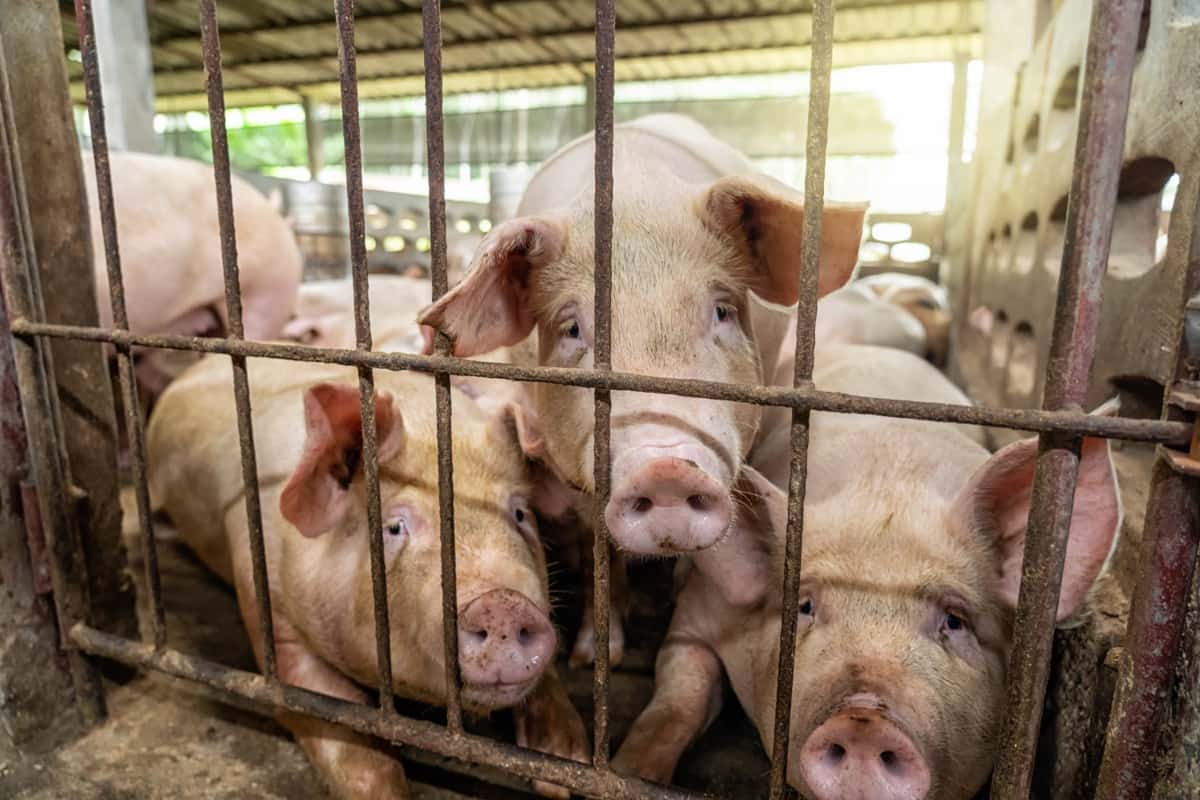
Pig farming loans and subsidies in Zimbabwe
To start a pig farm in Zimbabwe, you must obtain specific permits and licenses from government authorities. In addition, get prior agricultural zoning approval from the government. This is essential since pig farming is classified as an agricultural activity.
You need to obtain a loan from a bank or other financial institution. In addition, you will want to provide documentary proof of ownership of the land where the pigs will be raised and proof of income. Finally, contact your local extension agent or other agricultural experts for advice on breeds of pigs to choose, feed, and housing specifications for your operation.
Conclusion
Pig farming is a type of livestock production that involves raising pigs. Pigs are the most versatile animals for farmers, as they can consume a wide variety of feed and produce meat and other products. In addition, pigs are intelligent animals capable of providing many benefits to a farm, such as food and fiber production.
- Types of Pesticides Used in Agriculture: A Beginner’s Guide
- Economical Aquaculture: A Guide to Low-Budget Fish Farming
- 15 Common Planting Errors That Can Doom Your Fruit Trees
- How to Make Houseplants Bushy: Effective Tips and Ideas
- Innovative Strategies for Boosting Coconut Pollination and Yield
- Pollination Strategies for Maximum Pumpkin Yield
- The Complete Guide to Chicken Fattening: Strategies for Maximum Growth
- Natural Solutions for Tulip Problems: 100% Effective Remedies for Leaf and Bulb-Related Issues
- Revolutionizing Citrus Preservation: Towards a Healthier, Greener Future
- Natural Solutions for Peony Leaf and Flower Problems: 100% Effective Remedies
- Maximizing Profits with Avocado Contract Farming in India: A Comprehensive Guide
- Natural Solutions for Hydrangea Problems: 100% Effective Remedies for Leaf and Flowers
- The Ultimate Guide to Choosing the Perfect Foliage Friend: Bringing Life Indoors
- From Sunlight to Sustainability: 15 Ways to Use Solar Technology in Agriculture
- The Ultimate Guide to Dong Tao Chicken: Exploring from History to Raising
- The Eco-Friendly Makeover: How to Convert Your Unused Swimming Pool into a Fish Pond
- Mastering the Art of Delaware Chicken Farming: Essentials for Healthy Backyard Flocks
- 20 Best Homemade Fertilizers for Money Plant: DIY Recipes and Application Methods
- How to Craft a Comprehensive Free-Range Chicken Farming Business Plan
- Brighten Your Flock: Raising Easter Egger Chickens for Beauty and Bounty
- How to Optimize Your Poultry Egg Farm Business Plan with These Strategies
- Subsidy for Spirulina Cultivation: How Indian Government Schemes Encouraging Spirulina Farmers
- Ultimate Guide to Raising Dominique Chickens: Breeding, Feeding, Egg-Production, and Care
- Mastering the Art of Raising Jersey Giant Chickens: Care, Feeding, and More
- Ultimate Guide to Raising Legbar Chickens: Breeding, Farming Practices, Diet, Egg-Production
- How to Raise Welsummer Chickens: A Comprehensive Guide for Beginners
- How to Protect Indoor Plants in Winter: A Comprehensive Guide
- Ultimate Guide to Grow Bag Gardening: Tips, Tricks, and Planting Ideas for Urban Gardeners
- Guide to Lotus Cultivation: How to Propagate, Plant, Grow, Care, Cost, and Profit
- Agriculture Drone Subsidy Scheme: Government Kisan Subsidy, License, and How to Apply Online
- Ultimate Guide to Raising Araucana Chickens: Breed Profile, Farming Economics, Diet, and Care
- Bringing Hydroponics to Classroom: Importance, Benefits of Learning for School Students
- Ultimate Guide to Raising Polish Chickens: Breed Profile, Farming Economics, Diet, and Care
- Ultimate Guide to Raising Australorp Chickens: Profile, Farming Economics, Egg Production, Diet, and Care
- Silkie Chicken Farming: Raising Practices, Varieties, Egg Production, Diet, and Care
- Sussex Chicken Farming: Raising Practices, Varieties, Egg Production, Diet and Care
The best learning platform
Information is good